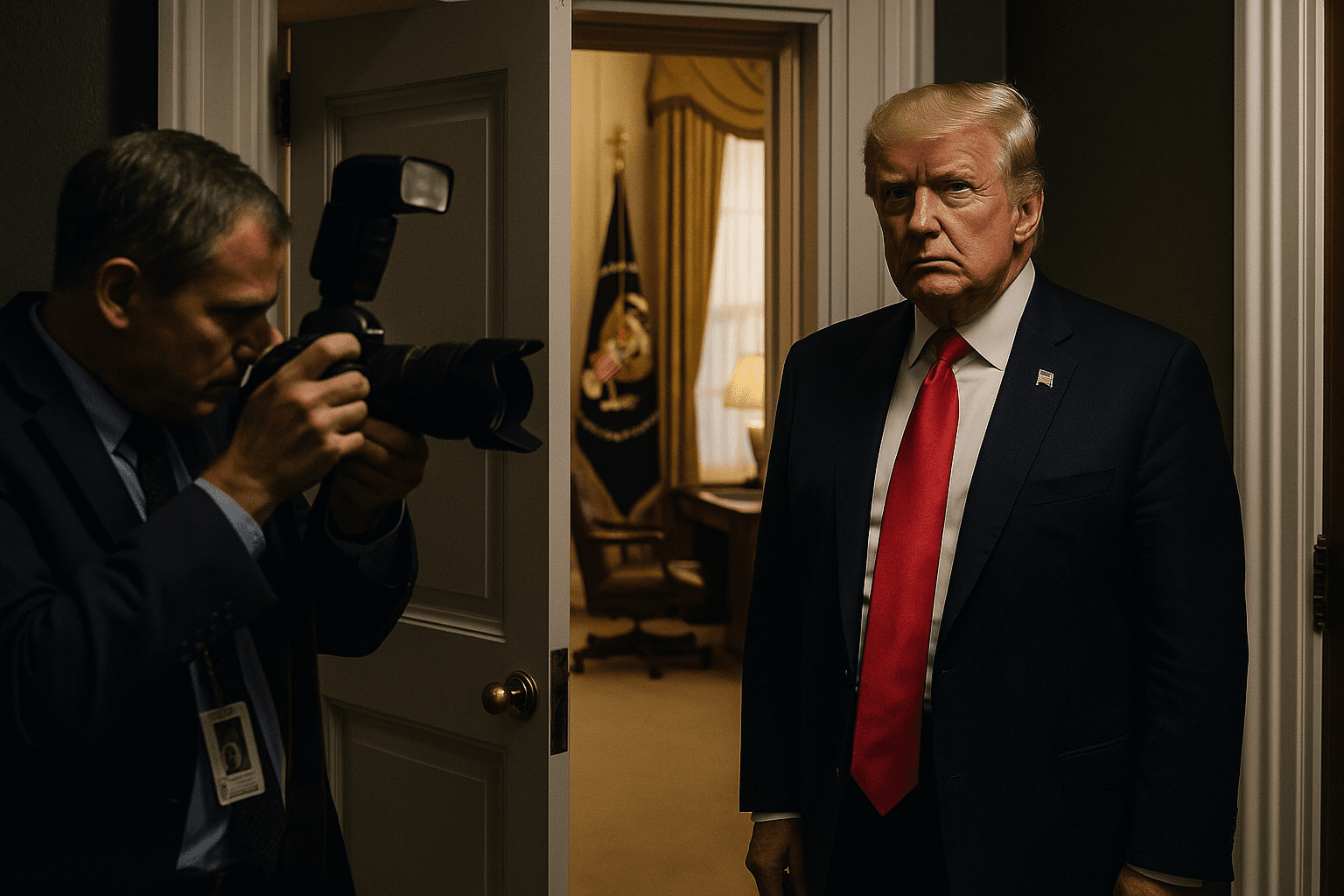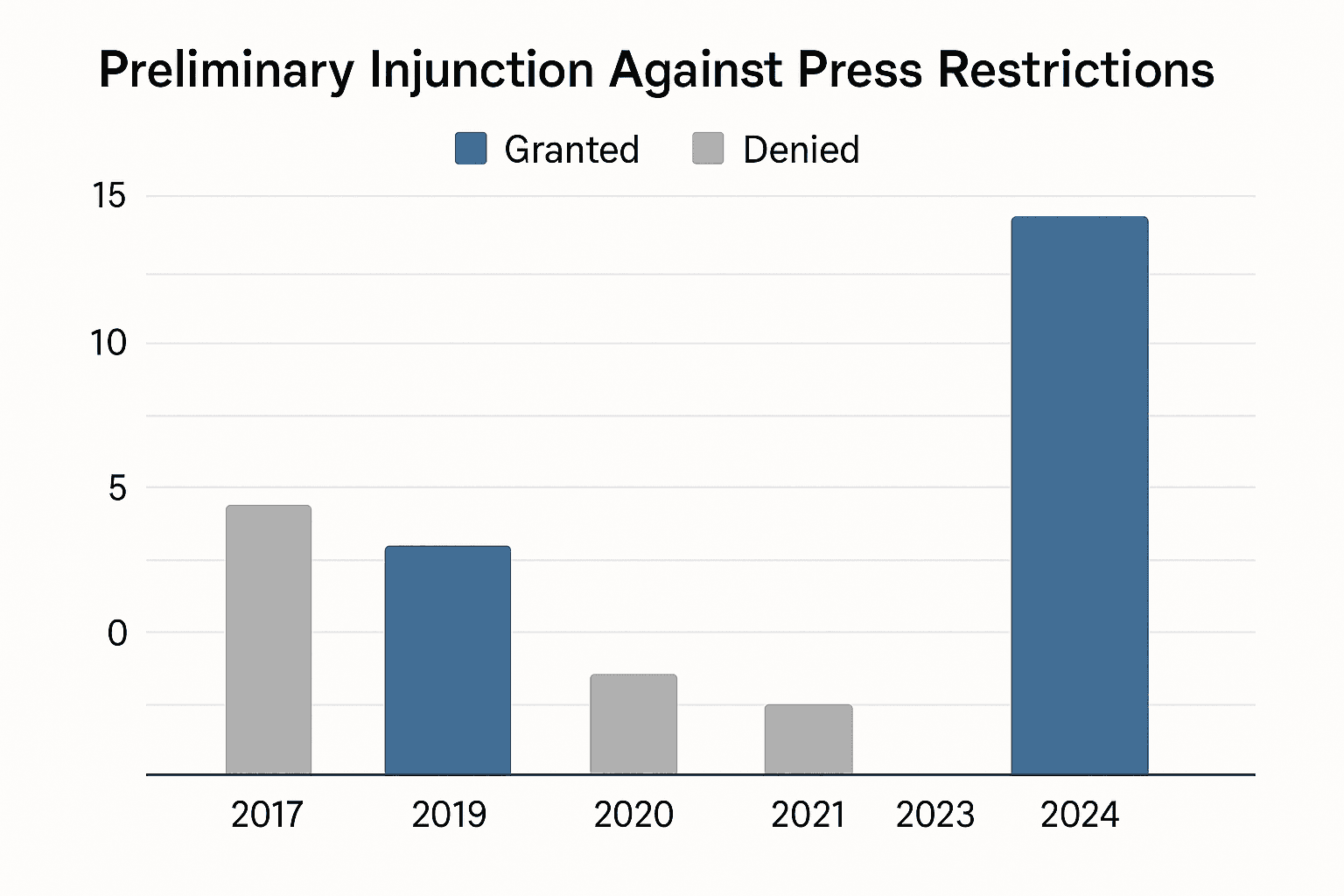Appeals Court Will Decide If Trump Can Bar Associated Press
The D.C. Circuit scheduled oral arguments over whether the Trump administration lawfully restricted Associated Press access to the Oval Office and other White House areas, a dispute that could reshape the boundaries of presidential control over credentialed news organizations. The outcome matters to anyone who relies on independent reporting to hold leaders accountable, especially during public health emergencies and policy debates that affect vulnerable communities.

The U.S. Court of Appeals for the District of Columbia Circuit scheduled oral arguments on whether steps taken by the Trump administration to restrict Associated Press reporters from the Oval Office and other White House spaces were lawful. The case centers on the administration’s decision to exclude the AP from certain press pools after a confrontation tied to a naming dispute, prompting litigation that has raised both First Amendment and due process questions.
A federal judge previously granted a preliminary injunction that allowed the AP back into some areas of the White House, but that injunction was paused while the appeal proceeds. The appeals court action, set after filings and responses from both sides, will determine not only the immediate access rights of one of the nation’s largest news organizations but also the extent of executive power over press credentials and special access arrangements.
Press pools are a long standing mechanism for rotating access to tightly controlled events and spaces within the White House. Courts historically give the executive latitude to manage logistics and security, but legal experts said this case could set a meaningful precedent on whether that authority includes the ability to remove or blacklist a credentialed news organization for perceived breaches of conduct without robust procedural protections.

The implications extend beyond journalism. Public health officials, clinicians, and community leaders have long relied on a functioning White House press operation to explain national strategies during crises, including pandemics, natural disasters, and public health emergencies that disproportionately affect low income communities and communities of color. Restrictions on which outlets can report from inner corridors of power may reduce the diversity of questions posed to top decision makers, and narrow the range of issues that receive sustained scrutiny.
Legal filings reviewed by Reuters show the dispute touches on questions about notice and opportunity to respond, standards for disciplinary action against credentialed organizations, and whether selective exclusion threatens the press and public’s interest in transparent governance. Advocates for press freedom argue that limiting access to a major news organization risks eroding public confidence and impeding the flow of information critical to informed civic participation. Scholars of administrative law caution that a ruling affirming broad executive discretion could leave few checks on how access decisions are made.

Beyond constitutional doctrine, the case raises equity concerns about who speaks for the nation. When access is narrowed, marginalized populations who rely on investigative reporting to surface inequities in health care, housing, and emergency response may lose a conduit to federal accountability. Conversely, courts weighing the appeal will also consider legitimate security and operational needs of the presidency.
The D.C. Circuit’s decision will be watched closely by news organizations, government officials, civil liberties groups, and public health advocates. If the appeals court upholds the administration’s actions, it could embolden future administrations to impose stricter controls over which outlets gain privileged proximity to the president. If the court sides with the AP, it could reinforce judicial oversight of executive discretion in granting and revoking press privileges, preserving a broader infrastructure for public scrutiny at the highest levels of government.


